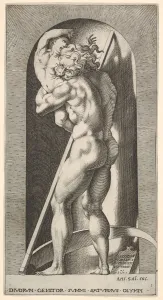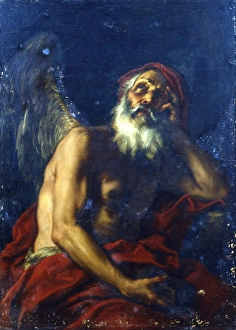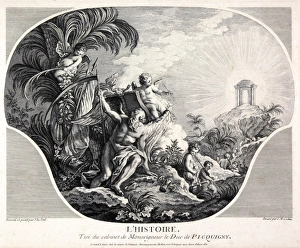Chronos Collection
"Chronos: The Eternal Keeper of Time and Truth" In Plate 1, we witness the chilling image of Saturn in a niche, his insatiable hunger driving him to devour his own son
All Professionally Made to Order for Quick Shipping
"Chronos: The Eternal Keeper of Time and Truth" In Plate 1, we witness the chilling image of Saturn in a niche, his insatiable hunger driving him to devour his own son. Standing before a scythe, he symbolizes the relentless passage of time and its inevitable consequences. The painting "Time Revealing Truth" from c. 1650 captures the essence as an entity that unveils hidden realities with each passing moment. This oil on canvas masterpiece showcases how time is an unyielding force that brings forth ultimate truths. An everlasting calendar with a wooden stand from Dresden in the 18th century serves as a reminder of Chronos' omnipresence. It stands as a testament to our perpetual quest for understanding and measuring time's ceaseless flow. In "Allegory of Time freeing Faith, " depicted on wood, we witness Chronos liberating faith from its temporal constraints. This portrayal highlights how time can both confine and release our beliefs, shaping our perception of reality. From the Game of Mythology (Jeu de la Mythologie) comes Saturn once again, this time portrayed in 1644. Through this artwork, we are reminded that Chronos has been revered throughout history for his role as the personification of time itself. Giovanni Maria Butteri's creation "Chronos" from 1582-1585 showcases an intricate representation where every detail reflects the profound impact that Chronos holds over existence. His presence looms large, reminding us all that no one can escape his grasp. The works by Giovanni Battista Tiepolo further explore the relationship between Chronos and humanity. In "Chronos and a Young Woman, " we see their interaction through Tiepolo's masterful brushstrokes—a poignant depiction capturing both vulnerability and inevitability. "Apollo, the Muses and Chronos" painted around c1730 portrays these divine figures intertwined, emphasizing the interconnectedness of art, inspiration, and time.




















